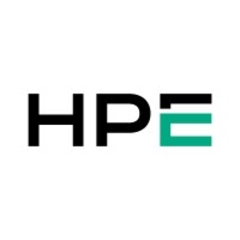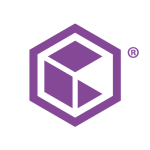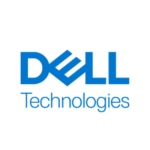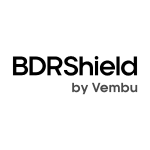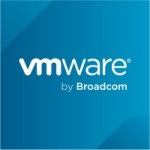What is our primary use case?
We implement Zerto as a part of a Disaster Recovery process for our valuable customers, in various environments. Most of them consist of two sites owned by the same customer, connected with campus or wan link, but both using VMware virtualization platform.
Recently we realized a dedicated infrastructure in our Datacenter, then started to propose to our customers DRaaS using those resources as a recovery site and including dedicated 24x7 support.
Few customers use the public cloud (Azure) as a recovery site: we could only implement and configure the solution or fully manage it because we are also a Microsoft Gold and Tier-1 partner.
How has it helped my organization?
Zerto helps reduce downtime in a wide number of situations because it can bring up an entire environment of 40-50 VMs in minutes.
Zerto helps to save time in a data recovery situation too. Some customers experienced VM or database corruption: using the solution's checkpoint feature, the data recovery happened within five minutes or less. A normal restore would probably be two to eight hours depending on if we had to restore from disk/tape and need or not need to apply logs.
Zerto is great at DR testing. We can spin off critical VMs or an entire environment pretty quickly and have users test against this copy with no production environment impact.
Its overall impact on our RTO has been great. It took a few hours in a very complex environment. The customer was very impressed with Zerto when we started with the PoC and then put it in production. It is great.
Zerto has reduced our downtime. Customers have minimal downtime.
We have been enabled to automate tasks with Zerto. Staff can now be dedicated to other tasks.
What is most valuable?
A great Zerto feature is the non-intrusive failover of the application, similar to an actual disaster recovery test without impacting the services that are currently online. Sometimes customers need to failover to an isolated environment and validate an application without impacting the production environment: we can achieve this goal with Zerto. Again, we can do regular testing in a non-impactful way using isolated testing. For customers of our DRaaS we include once a year, a live test that is more like what would happen if the customer lost the production site.
Eventually, the VPGs (Virtual Protection Groups) allow to grouping of one or more VMs into a single entity, ensuring every point in time inserted into Zerto’s journal (a checkpoint) is from the same point in time for all components within the protection group. This allows easy recovery of an entire application and its dependencies to a consistent point in time.
Zerto is also a very easy product to use.
We started using it a few months ago for immutable data copies for a few customers on multiple repositories like HPE.
Zerto's ability for blocking unknown threats and attacks is key in our disaster recovery process. It's the technical solution where we implement all the data. It is also the recovery plan for our customers.
We have tried experimenting implementing Zerto with the the disaster recovery site on cloud. We use an Azure. It's very useful. Zerto has enables us to do disaster recovery in the cloud, rather than in a physical data center.
We've only used Zerto two or three times to migrate an existing data center to a new one because the hardware under the machine was from a different brand. We used Zerto because the environment is quite complex and the migration using other tools did not fulfill the customers' needs. Zerto is very good at data migration.
One of its best features Zerto is the ability to maintain the data of multiple VMs using Vipro Protection Group. We can aggregate multiple VMs in a workload for specific services. They are protected at the same time.
It's very easy to manage and monitor our DR plans with Zerto. It's very easy to learn and operate. It's easier than VMware.
What needs improvement?
Zerto could be considered as a backup product but this is not true. So if we could consolidate and use Zerto for disaster recovery as well as everyday backup and restore for situations where we need to recover something, that would be helpful. Anyway, we think that Zerto will win with no competition in the Disaster Recovery process, so we stay focused on this.
Now we are testing version 10 which include real-time ransomware detection, a new Cyber Resilience Vault and enhanced cloud capabilities and security: we expect more from these features for superior hybrid cloud security.
Reports could be useful for customers. I would like to have a report that shows the latency for every single internal VM. it would be useful for troubleshooting.
For how long have I used the solution?
We started to evaluate Zerto about three years ago, then we implemented it for our valuable customers who need affordable solutions in their disaster recovery processes.
What do I think about the stability of the solution?
We haven't had any issues with any of the builds or the virtual managers, especially with the new "appliance" mode. It just runs.
What do I think about the scalability of the solution?
Zerto is a very scalable solution. We can create as many protection groups as customers need for their environment even as they growth.
Our customers are mostly medium to small sized enterprises.
How are customer service and support?
We use Zerto Quick Start service for the first installations and we use it in very complex environments: great.
We are very satisfied. We had to use it at the beginning to understand the implementation process and what we needed to do.
They are quick and professional.
How would you rate customer service and support?
Which solution did I use previously and why did I switch?
We previously used Veeam (B&R + DRO) and VMware (Replication + SRM), but they could not offer all the features of Zerto.
We also sometimes still use VMware Disaster Site Recovery Manager in conjunction with VMware Backup and Recovery.
How was the initial setup?
The implementation is very straightforward. Must be considered security and lay out the network infrastructure to be more efficient.
But from the standpoint of installing and deploying the product, it's very simple.
What's my experience with pricing, setup cost, and licensing?
Pricing is adequate at the standard of the product, but there could be "always" some improvement. We would like to see a consumption model that would charge in a DR scenario, where you're failing over and consuming those resources, instead of a per-protected-node model.
What other advice do I have?
My advice is to look at what you're trying to accomplish: with Zerto you could combine resilience, mobility, and protection into a single software-only solution. It's hardware and hypervisor agnostic as to whether you're using VMware, Microsoft, or Azure.
We have built a disaster recovery landing zone in our Datacenter and we built an isolated environment so we could do non-intrusive failover tests, and still keep customers' production environment up and running.
We have recently introduced the immutable data copies feature, because of the issue of cyberattacks and because even backup systems could become corrupted and then this is still a bad situation. The ability to look at the data that is being replicated in real-time and scan it, in conjunction with immutable data, and putting that into a vault, would be a great benefit.
The 3-2-1 rule isn't so important for us when it comes to disaster recovery. We consider the backup process and then the disaster recovery process. We treat them as two different workloads that we could implement to our customers to solve different issues.
The majority of our customers use it in a hybrid environment, but they prefer to use disaster recovery in their own data center. In some cases, we provide disaster recovery as a service, where the disaster recovery site is in our data center.
Doing a proof of concept is the best way to implement and sell Zerto. The customers don't always trust our advice but when I start with a POC in their environment, they see it's benefits.
Which deployment model are you using for this solution?
Hybrid Cloud
If public cloud, private cloud, or hybrid cloud, which cloud provider do you use?
Microsoft Azure
Disclosure: My company has a business relationship with this vendor other than being a customer. I work for Quanture Spa, which is a System Integrator HPE Gold Partner in Italy

